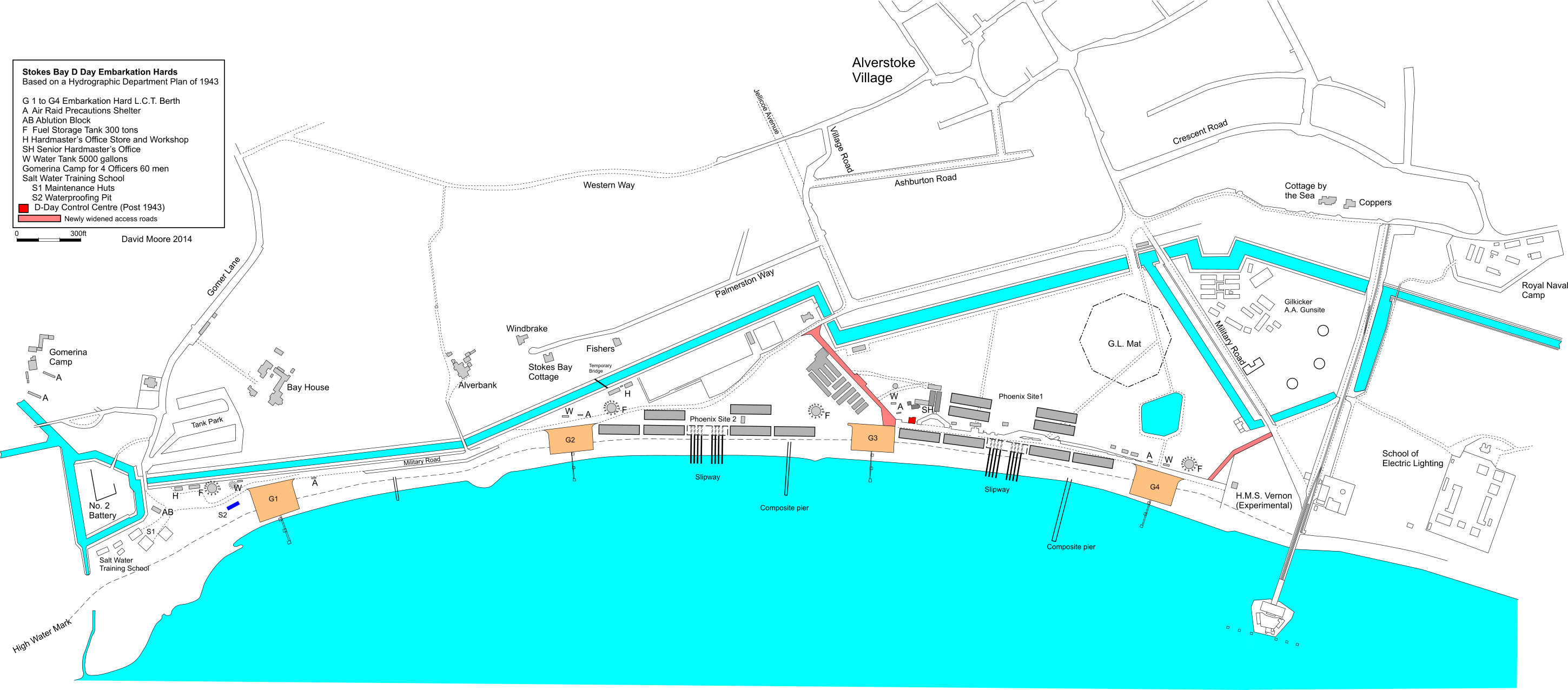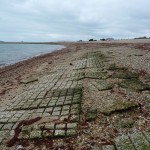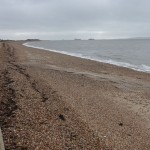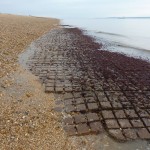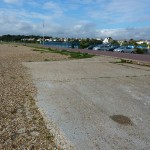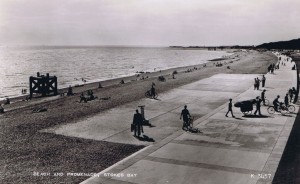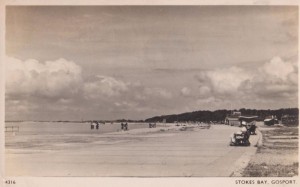In 1942 Stokes Bay was chosen as an embarkation point for tanks and support vehicles destined for Normandy all to be loaded at Hards G1 to G4.
The whole of the Bay became a restricted area although locals still had some access but binoculars and cameras were forbidden. All existing buildings at the Bay were commandeered and the bathing huts removed. Plans were drawn up to widen and strengthen certain key roads and corners in Alverstoke for tanks and other military vehicles to reach the Bay, this including a section of Village Road. Two new concrete and tarmac roads were planned, one at the east end of the beach and promenade near to railway pier and another at the end of Village Road to connect Stokes Bay Road to the promenade near to the bathing station. Stokes Bay Road between Village Road and No.2 Battery was widened and strengthened. Western Way and Jellicoe Avenue were to be Transit Areas for the hards. Contrary to some local belief Jellicoe Avenue was not constructed or widened specially for the D Day embarkation hards.
Each hard consisted of a concrete approach which led on to a sloping mat of flexible concrete blocks laid onto the beach (called ‘chocolate blocks’ by the locals because of their resemblance to Cadbury’s chocolate bars). These were cast on the beach itself using concrete sand and shingle.
Only Landing Craft Tanks (LCTs) left from Stokes Bay; Landing Ship Tanks (LSTs) left from Hardway as the water was not deep enough and the tides not suitable. A row of three concrete and steel dolphins was constructed down the centre of each hard for mooring the LCTs connected by a scaffolding walkway. The first dolphin was positioned between half tide and low tide, the other two were in the sea. A power cable from a nearby generator provided lights and a fuel supply line allowed fuel for the LCTs to be pumped from a large fuel tank at each hard. Water was stored at each hard in large tanks and a supply pipe ran out to the dolphins.

Maintenance staff and reserve crew for Hard G1 were quartered in Gomerina Camp, for Hard G2 in Gomerina Camp and Palmerston Way (Fishers, Stokes Bay Cottage and Windbrake), for Hard G3 in Palmerston Way and for Hard G4 in Fort Lane (Cottage by the Sea and Coppers).
Ancillary buildings also constructed at each hard consisted of a Hardmaster’s Office, Workshop Naval and Victualling Store, Canteen, Air Raid Precautions Shelter with first aid facilities in a marquee. The Senior Hardmaster’s Office together with a mess and telephone room were situated in the existing bathing station and restaurant. Just prior to D Day a purpose built Control Centre was added close to hard G3 alongside the existing Senior Hardmaster’s Office in the old Bathing Station.
After the War the Bay was handed back to Gosport Borough Council (GBC). Most of the equipment had been removed including the huts, tanks, shelters and storage facilities. The approach roads and concrete mats to the hards were left, GBC converting those at G1 and G2 to car parks. Areas of concrete for hards G3 and G4 still remain alongside the promenade. Some of the flexible concrete matting can still be seen when exposed by tides and storms. Most of the mooring dolphins remained but were demolished over a period of time. In April 1954 the minutes of GBC recorded that ‘2 of the 3 War Department dolphins at Stokes Bay are to be removed’. In May 1954 they had an offer to ‘cut off all dolphins at east and west ends of Stokes Bay’. The last one to survive and used as a diving platform was at Hard G3. In 1982 GBCouncil noted that it had accepted responsibility for this dolphin in 1972 and, as it was suffering from underwater corrosion, they demolished it.
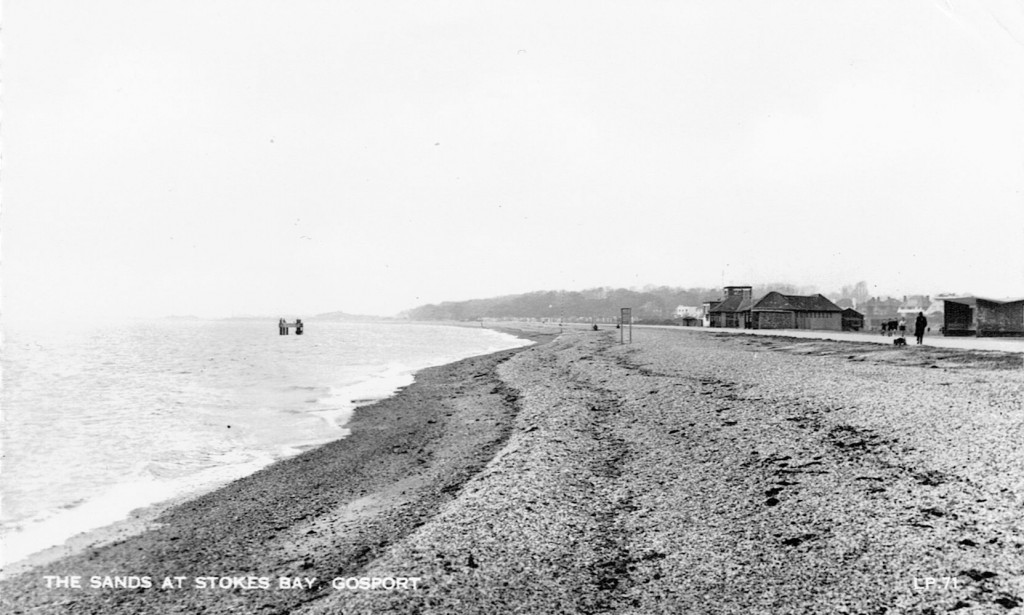 |
Thanks to Kip Miller for the link to these YouTube videos that explain the D Day constructions and Stokes Bay. They also contain a sequence taken at Stokes Bay.
Excellent commentary by Kip!
